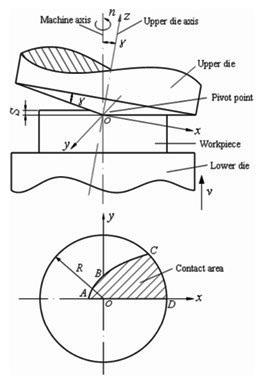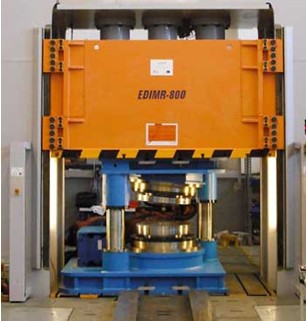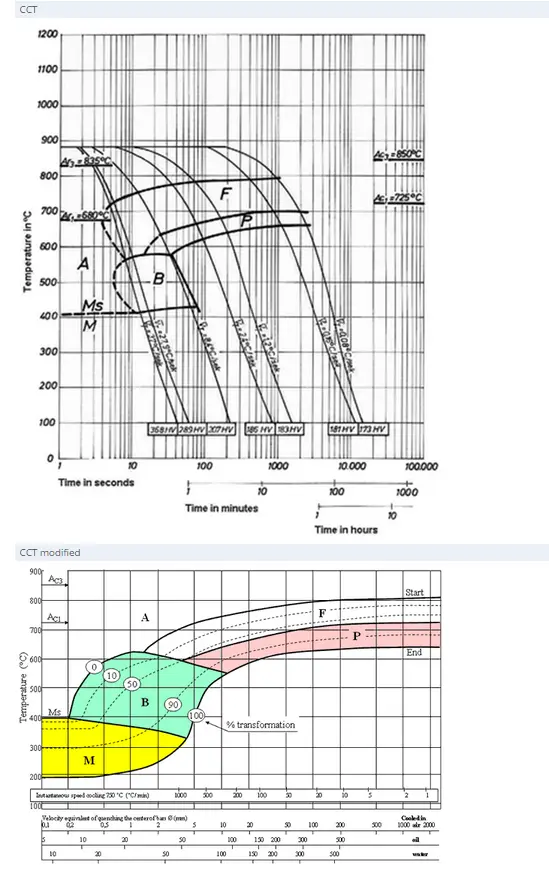Rotary Forging
Abstract
Rotary forging is an advanced cold forging process that incrementally forms materials, achieving high precision and superior mechanical properties. This technique offers significant benefits over conventional forging, including greater dimensional accuracy, improved surface finish, material hardening, and optimized grain structure. Rotary forging reduces energy consumption, tooling costs, and the need for secondary machining, making it a preferred method in the automotive, machine tool, and hardware industries. This article explores the rotary forging process, its advantages, applications, and recent developments in process analysis and simulation.
Introduction to Rotary Forging
Rotary forging, also known as rotary incremental forming, is a specialized cold forging technology. It uses localized, incremental deformation steps to achieve highly accurate and precise results. Compared to conventional forging methods, rotary forging provides superior dimensional accuracy, enhanced surface finish quality, and material hardening with improved grain structure.
With the advancement of industrial technology, precision forging and net-shape forging have gained popularity due to their efficiency in material use, energy savings, and reduced finishing steps. However, the increasing complexity of component shapes and tooling demands has pushed the boundaries of traditional precision forging. This has led to renewed interest in incremental forming processes, including rotary forging, swaging, cross-wedge rolling, ring rolling, and spinning.
The Rotary Forging Process
In rotary forging, the material is deformed incrementally as it contacts the tools in successive steps. The process combines rotational and axial compression movements, allowing for the precise forming of components. Rotary forging is especially effective for producing flat disk workpieces but is also used to manufacture wheel preforms, gears, discs, rings, and similar components.
Rotary forging can be performed at either cold or hot temperatures. The technique enables efficient use of materials, often reducing or eliminating post-forging machining and welding. Due to lower contact and friction, rotary forging requires less force—typically 5% to 20% less than conventional forming presses—allowing for smaller presses and simpler tooling.

Figure 1: Schematic diagram of cold rotary forging of a cylindrical workpiece
Process Description
During cold rotary forging, a conical upper die oscillates continuously around the vertical axis of the machine at a constant speed. At the same time, the lower die pushes the workpiece upward at a steady feed rate, subjecting it to axial compression. As the upper die repeatedly presses the workpiece, plastic deformation occurs incrementally until the final shape is achieved.
Key Advantages of Rotary Forging
Rotary forging offers several technological and economic benefits over conventional forging methods:
Technological Advantages:
- Greater deformation capabilities
- Significant force reduction (5%-20%) due to decreased contact and friction
- High dimensional accuracy and near-net shape forming
- Minimized burr formation and material waste
- Superior surface finish without cracks from impact
- Enhanced material hardening and optimized grain structure
- Elimination of many machining and welding operations
- Quieter and less polluting processes, often requiring little or no lubricant
Economic Advantages:
- High flexibility, allowing rapid adaptation to new part geometries
- Reduced investment in smaller presses and simpler tooling
- Lower tooling costs due to simplified tool designs
- Fewer tooling changes and forming stages (2–4 stages instead of more)
- Reduced energy costs
Applications and Industrial Impact
Rotary forging is widely used in manufacturing mechanical components such as disks, rings, flanges, and gears. Its efficiency, high material utilization, and superior product quality have made it a preferred process in the automotive, machine tool, electrical equipment, cutting tool, and hardware industries.

Figure 2: Rotary forging machine in operation
Recent Research and Process Analysis
Due to its significant advantages, cold rotary forging has become a subject of extensive research. Studies have focused on measuring pressure distribution at the tool-workpiece contact area, calculating and verifying process parameters, and analyzing metal flow through analytical, experimental, and finite element (FE) methods. For example, researchers have developed three-dimensional rigid-plastic finite element codes and used specialized software such as DEFORM to simulate the rotary forging process and optimize manufacturing parameters.
Conclusion
Rotary forging is an innovative and highly efficient metal forming technology. It provides numerous benefits over conventional forging, such as reduced material and energy consumption, improved accuracy, and better mechanical properties. As industries continue to demand more complex and precise components, rotary forging is expected to play an increasingly important role in modern manufacturing.
Encontre Milhares de Diagramas de Tratamento Térmico Instantaneamente!
Total Materia Horizon contém detalhes de tratamento térmico para centenas de milhares de materiais, diagramas de temperabilidade, têmpera de dureza, diagramas TTT e CCT e muito mais.

Obtenha uma conta de teste GRATUITA na Total Materia Horizon e junte-se a uma comunidade de mais de 500.000 usuários de mais de 120 países.